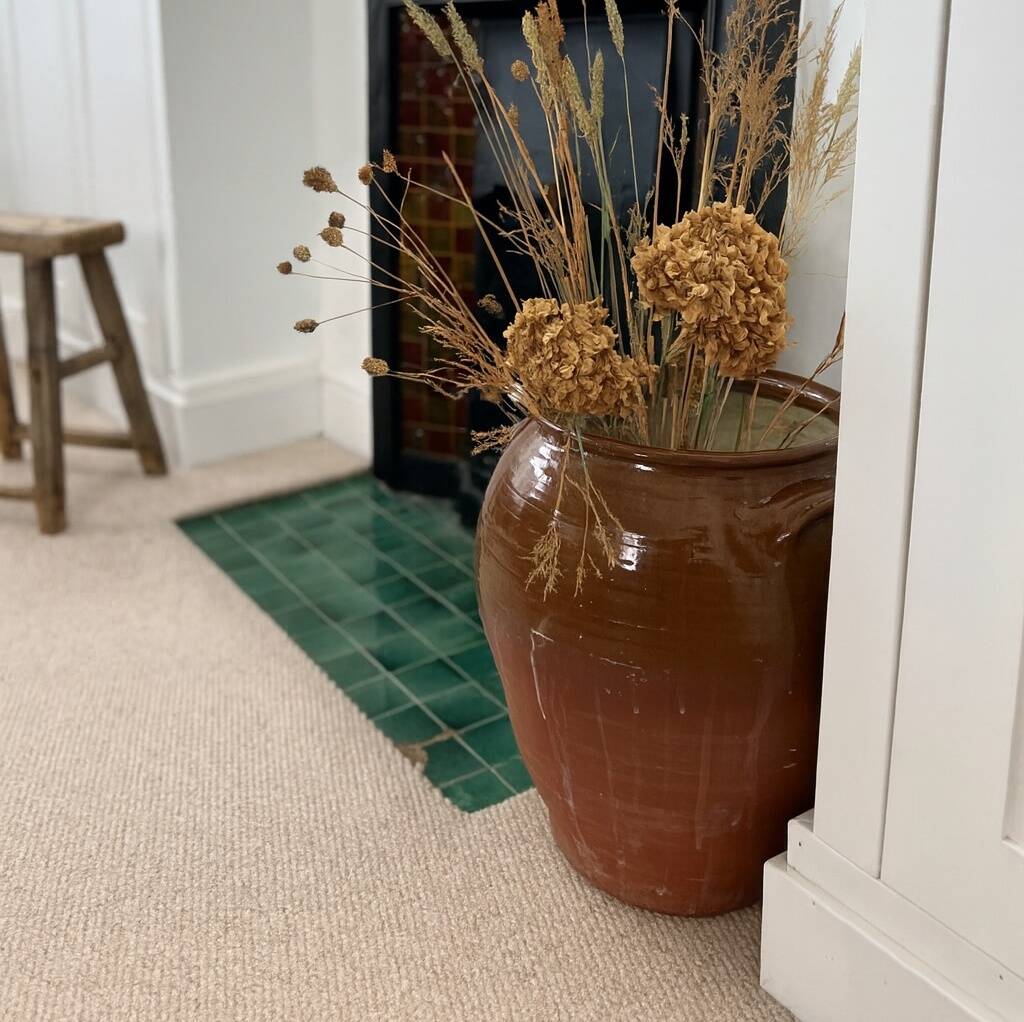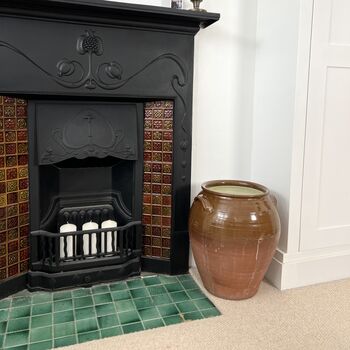An impressively scaled 19th-century terracotta confit pot with a rich brown slip glaze and stunning natural mineral markings.
This hand-thrown piece carries the soulful charm of traditional rural French kitchenware, once used for storing preserves or pickled meats.
The terracotta storage pot has a partial salt glaze - a brown dripped rim and glazed handles. The lower half was left unglazed because it was often buried halfway in the cool earth to preserve the confit. The glazed interior aided hygiene and storage longevity. The glaze itself is that classic warm honey brown, with slight variation in tone, which is a gorgeous sign of hand-applied slip glaze and wood-fired or early kiln techniques.
This pot is in excellent condition, with distinctive drip marks and natural wear adding layers of history and texture, telling the story of years gone by.The base is raw, unglazed terracotta clay, and you can see wear and specks of mineral deposits. There’s no factory mark, which is common for utilitarian rural pottery of that era. The concentric rings also suggest it was thrown on a wheel rather than mold-made.
Two looped side handles were practical for carrying; their shape helps distinguish French provincial styles. We can identify this as an authentic southern French confit pot, as the elegant tapered belly with a wide opening and ear-like loop handles are signature southwest France, especially from regions like Ariège, Toulouse, or even Lot-et-Garonne.
Its generous 44cm height and curved form give it sculptural presence - whether styled alone in a quiet corner or paired with wild branches, it makes a grounding, rustic statement.
Big pieces like this are far less common than the smaller preserve jars. It’s a true one-off for those who love authentic vintage with imperfect beauty.






















